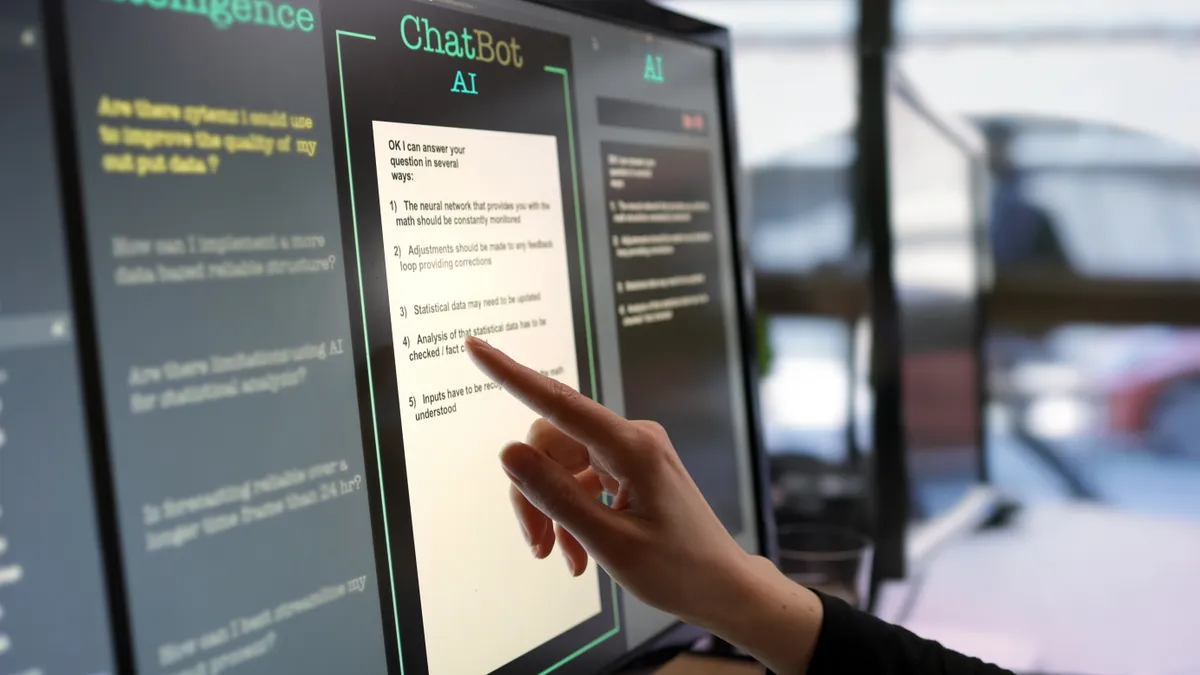With a new administration taking office and a new law, the Every Student Succeeds Act, taking effect last fall, 2017 was an eventful for K-12 education — and those changes, among others, are only going to keep changing the playing field in 2018.
From district cooperatives and personalized professional development to new approaches to class design and assessment, administrators should keep their eyes on these six trends over the coming year.
District cooperatives
Hailed as the "Most Disruptive Idea" in the 2017 Dive Awards for K-12, district cooperatives and collaboratives are likely to gain more steam in the coming year. Case in point: In the fall, Bill Gates announced that the Bill & Melinda Gates Foundation would refocus its educational philanthropy efforts on school networks, inspired in part by district collaborations like California's CORE Districts.
Expect reasons for collaboration between districts to maintain variety, as well, as the concept is flexible to fit a variety of needs that districts of all sizes and locations can benefit from. Existing cooperatives and collaboratives have focused on green schools, improving STEM in Appalachia, and getting more competitive pricing and quality for a wide selection of items like educational furniture, supplies, technology, food services, playground equipment, instructional support, sports equipment and uniforms for school and sports.
Makerspaces
While the making trend has been building for the past few years, particularly in school media centers, these hands-on experiences — that range from using low-tech craft supplies to more advanced coding and digital tools — will continue to impact school and classroom design as well as curriculum.
A survey by School Library Journal released last year showed continuing growth in school maker programs and that more librarians are working with classroom teachers on incorporating maker activities into their teaching. One school district leader recently said his district’s philosophy is “Making is how we learn.”
Apprenticeships
With the growth in focus on career and technical education opportunities over the last few years, apprenticeship programs have returned to the spotlight. It should come as no surprise that these programs also have the support of President Donald Trump, who before taking office, was perhaps best known for his reality show "The Apprentice."
Criticism of the approach often centers around the potential for these programs to become a second-tier alternative to traditional postsecondary programs and degrees, which arguably deliver soft skills that help workers pivot to new fields amid economic changes alongside the technical skills necessary for success in a given field. But a rising skills gap among high school graduates and the acknowledgment that not everyone has the means to pursue a degree may necessitate an embrace of the model.
Its success will require more partnerships between education and private industry, building on an ongoing trend resulting from both funding needs and demands for career and technical education. But apprenticeships bring further incentive to local businesses in particular by opening new talent pools and providing a financial return on their investment when students graduate.
Personalized professional development
Districts have taken major steps in recent years toward moving away from a uniform approach to PD in which educators tend to participate in the same workshops regardless of their years of experience or whether the topic applies to their work. Online PD systems and microcredentials are a few of the ways districts are personalizing learning for their educators. But moving forward, more districts will discover that choice has to be balanced with the overall improvement goals of the district and the specific needs of local schools.
Ideally, says Learning Forward’s Executive Director Stephanie Hirsh, “content expectations — what we will learn and be able to do — are shared, and process or designs for learning — how we will get there — can be personalized.
Assessment
When the Every Student Succeeds Act was signed into law in late 2015, it came with the promise of a reduction in high-stakes standardized testing. This was welcome news to educators — and a growing opt-out movement — who had grown weary of the amount of class time dedicated to teaching students how to succeed on reading and math assessments at the expense of a broader, well-rounded education.
With the law going into implementation in the fall, this spring's testing season will be the first where states have the ability to take advantage of the increased flexibility. Thus far, states have worked to reduce the number of testing days overall and better streamline assessments, though a 95% participation rate is still tied to federal funding, and many states are still largely sticking to reading and math exams as the primary indicators of student achievement.
Some, however, have added science to the mix. And the added flexibility and funding for "innovative assessment pilots" could also see a redefinition of what constitutes an assessment overall.
With a handful of states, including California, still going back and forth with the U.S. Department of Education on their ESSA plans, it's difficult to gauge how the overall assessment picture will shape up, though this assessment season will likely provide a good idea of where things are headed in the next few years.
Flexible space and furniture
Educators with innovative approaches to instruction and grouping students are finding that classroom design and the school construction industry is beginning to catch up with them. Open spaces and modular furniture that allow for flexible arrangements are beginning to replace one-size-fits-all classrooms, as well as break-out spaces that allow teachers to work with small groups of students and students to collaborate on projects.
Just as teachers are increasingly considering the use of technology in planning their lessons, they will begin to discuss how to best configure these spaces for student learning. The challenge will be achieving this kind of flexibility in older school buildings.























